What is the Blood Bag System?
The Blood Bag comprises specialized medical devices designed for the collection, storage, and transfusion of blood and its components. It consists of various components, including blood bags, tubing, filters, and needle sets, meticulously engineered to meet stringent quality standards.
What is the use of the Blood Bag System?
The primary function of the Blood Bag is to facilitate the collection, preservation, and transfusion of blood and its derivatives. Key uses include:
- Blood Collection: Enables the safe collection of whole blood or specific blood components from donors.
- Blood Processing: Allows for the separation of blood into its components, such as red blood cells, platelets, and plasma, for therapeutic use.
- Blood Transfusion: Facilitates the efficient and sterile transfer of blood and its components to recipients in need of transfusion therapy.
Benefits of the Blood Bag System:
Explore the array of benefits offered by the Blood Bag:
- Enhanced Safety: Incorporates advanced features to ensure the sterility and integrity of collected and stored blood products, minimizing the risk of contamination and infection.
- Optimized Blood Preservation: Utilizes specialized storage solutions and anticoagulants to extend the shelf life of blood components, preserving their efficacy for transfusion.
- Versatile Compatibility: Designed to accommodate various blood types and component requirements, offering flexibility in transfusion therapy for diverse patient populations.
- Ease of Use: Streamlined design and intuitive components simplify blood collection, processing, and transfusion procedures, enhancing operational efficiency in healthcare settings.
Side Effects of the Blood Bag System:
While the Blood Bag is generally safe and well-tolerated, potential side effects may include:
- Transfusion Reactions: Rare instances of adverse reactions, such as allergic responses or hemolytic reactions, may occur during or after blood transfusions.
- Transmission of Infections: Despite stringent screening measures, there is a minimal risk of transmitting infectious agents through blood products, including viruses and bacteria.
Important Considerations:
Guidelines for the safe and effective use of the Blood Bag:
- Regulatory Compliance: Ensure adherence to regulatory requirements and quality standards governing blood collection, processing, and transfusion practices.
- Proper Handling: Follow established protocols for the handling, storage, and transportation of blood products to maintain their integrity and safety.
- Patient Monitoring: Monitor recipients closely during and after transfusion for signs of adverse reactions or complications, and intervene promptly if necessary.
Empowering Safe Transfusions with the Blood Bag System:
Embrace the reliability and precision of the Blood Bag in ensuring safe and effective blood transfusions. With its advanced features and comprehensive safety measures, it serves as a cornerstone in modern healthcare, supporting critical transfusion therapy for patients worldwide.
Frequently Asked Questions About Blood Bag Systems:
1. What is a blood bag system?
A blood bag is a sterile container used to collect, store, and transport blood or blood components. It typically consists of a plastic bag, anticoagulant to prevent clotting, and tubing for attaching to needles and filters.
2. What are the different types of blood bag systems?
These bag systems come in various types depending on the blood component being stored. These include whole blood bags, red blood cell bags, plasma bags, and platelet concentrates.
3. How long can blood be stored in a blood bag system?
The shelf life of blood in a blood bag depends on the type of blood component. Whole blood can be stored for up to 42 days, while red blood cells can last for 42 days, platelets for 5 days, and plasma for up to one year.
4. What are the safety features of a blood bag system?
Blood bag incorporate several safety features. These include:
- Leakproof design: to prevent contamination.
- Sterilization: to ensure the absence of microorganisms.
- Blood group labeling: for accurate blood type identification.
- Expiry dating: to indicate safe storage duration.
5. How is blood collected in a blood bag system?
Blood donation involves inserting a needle into a donor’s vein and collecting blood into a sterile blood bag containing an anticoagulant. The blood collection process is strictly monitored to ensure donor safety.
6. Who uses blood bag systems?
This bag systems are used by various healthcare professionals, including:
- Blood banks: for collecting, storing, and distributing blood products.
- Hospitals: for administering blood transfusions to patients in need.
- Emergency medical services: for rapid blood product delivery in critical situations.
7. What are the benefits of using blood bag systems?
Blood bag offers several benefits:
- Safe blood transfusions: by minimizing contamination risk.
- Efficient storage and transportation: of blood products.
- Improved blood component separation: for specific transfusions.
- Extended shelf life: allowing for better blood management.
8. Are there any risks associated with blood bag systems?
While rare, there are potential risks like:
- Infectious disease transmission: though rigorous screening procedures minimize this risk.
- Blood type incompatibility: if the wrong blood type is transfused (strict protocols prevent this).
- Technical issues: such as leaks or contamination during collection or storage (highly unlikely due to quality control).
9. How are blood bag systems disposed of?
Used blood bags are considered medical waste and require proper disposal following strict regulations to prevent contamination.
10. Where can I learn more about blood donation and blood bag systems?
Several organizations provide information on blood donation and blood bag systems. You can consult resources from:
- Your local blood bank
- National blood donation organizations
- Credible medical websites such as https://specialitydrugs.in/

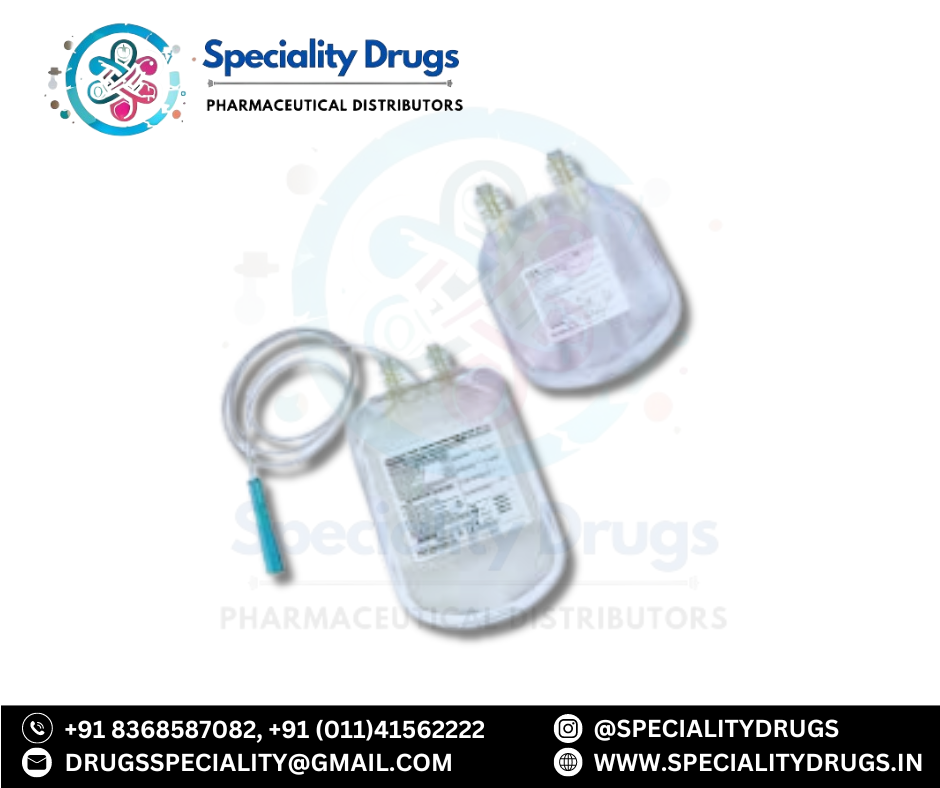
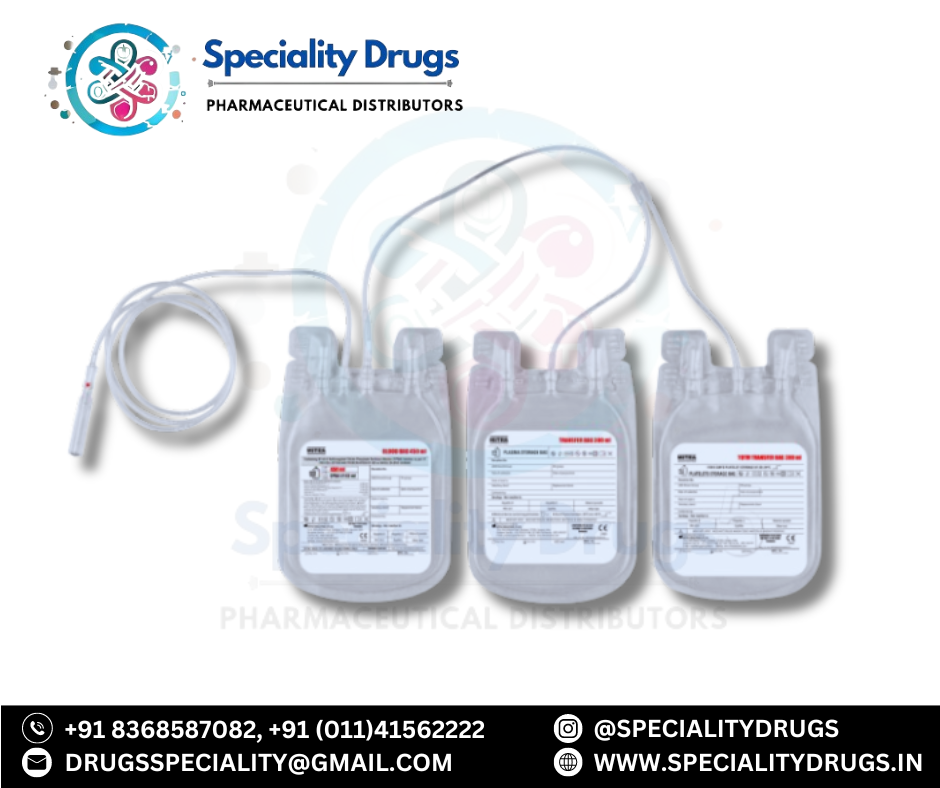

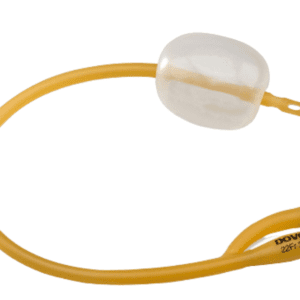
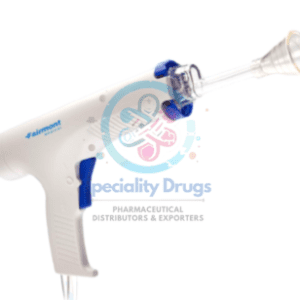
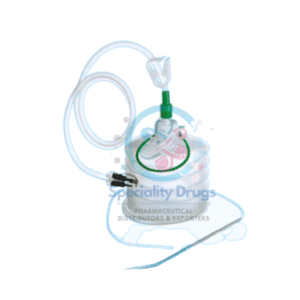
Reviews
There are no reviews yet.